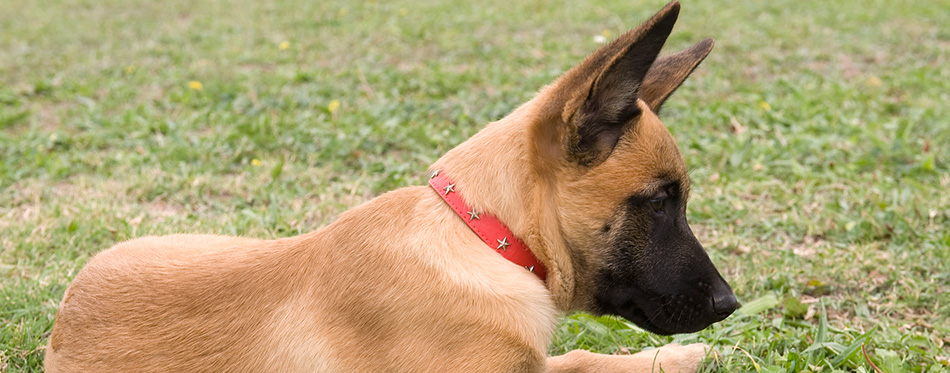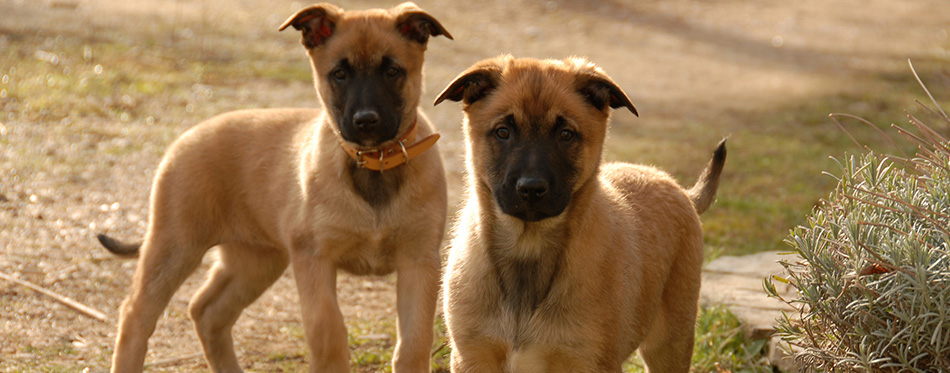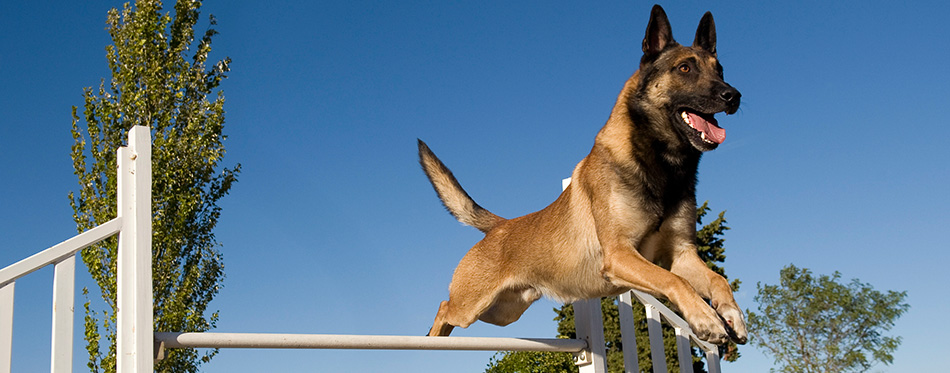The Belgian Sheepdog is a medium-sized pup of Belgium origin where and was originally used for the purpose of sheep herding. As time went by, this herding dog breed graduated to working with the police, and in the present times, is considered suitable for a plethora of dog sports and several types of work thanks to its remarkable versatility. If you are looking to purchase one, and interested about the breed’s temperament, grooming, care and more, continue reading to find out about the Belgian sheepdog.

History of the Belgian Sheepdog
This breed of dogs belongs to the varieties of shepherd dogs developed in Belgium towards the later part of the 1800s. These dog varieties were four in number, namely, Tervuren, the Malinois, the Laekenois, and of course, the Belgian Sheepdog, also called Groenendael. All except the Laekenois were recognized as distinct breeds by the AKC (American Kennel Club), on the other hand, all the four were recognized by the United Kennel Club as a singular breed.
September 1891 saw the formation of the Belgian Shepherd Dog Club charged with the responsibility of determining which type would be representative of the Belgium shepherd dog. Both fanciers and breeders had a meeting outside Brussels by November to examine the area’s shepherd dogs. The conclusions were that the indigenous shepherd dog of the area was square, medium-sized pups sporting dark brown eyes, well-set triangular ears, but has differences in color, texture, and coat length. Similar findings resulted from the examinations conducted in other provinces in Belgium.
The Belgian Sheepdog with the black coat was primarily developed by Nicolas Rose, a reputable breeder whose kennel dates back to 1893. The breed’s European name came from his estate Chateau Groenendael located within the outskirts of Brussels. He acquired the foundation dogs Petite and Picard d’Uccle, whose progeny are the ancestors of the present-day Belgian Sheepdogs. The dogs immediately gained popularity for their remarkable versatility, and during the early part of the 1900s, they functioned as police dogs in both New York and France. The Belgium customs were known to use them in patrolling the border.
The breed was highly involved in the First World War, pulling ambulances, carrying messages, and as well as machine guns. However, they gained more popularity in the US following the war with the Belgian Sheepdog Club of America formed in 1919. Though their population experienced a toll during the Depression era, the Belgian Sheepdog was featured in the Second World War as war dogs. And since then, interest in the breed has been on the increase.
Quick Facts about the Belgian Sheepdog
- Recognized as the Groenendael in all of Europe, the Belgian Sheepdog is best described as both graceful and elegant with imposing appearance. The dog sports a long black coat; he is beautiful, athletic, and still lives up to the working ability of its forebears, which make him a perfect choice for herding, agility, and obedience competitions.
- The dog is known to be devoted, alert, as well as protective, but more importantly, they are herding and chasing dogs, so don’t be surprised if your pooch goes off chasing after cyclists or vehicles, it is all in their DNA. Check out our guide on DNA tests for dogs for more info.
- The breed comes with a double coat with the top-coat abundantly endowed with long straight hair, which is moderately hash when you feel it, never silky or The undercoat is soft and dense, providing the Belgian Sheepdog with enough protection from the weather. The thickness of the dog’s coat will vary depending on the climate the dog finds himself.
- Shorts hairs are evident on the dog’s head, front of the limbs, and outer part of the ears. The ear openings are protected by tufts of hair. The rest of the pup’s body sports long hair. For males, the hair around their neck is called a collarette and comes quite abundant as well as long. A fringe of long hair is evident running down the back of the thighs and the back of the forelimbs. The tail is endowed with heavy, long, and abundant hair, which is just the same as in several other breeds where the male comes more ornamental than their female counterparts.
- A typical Belgian Sheepdog comes in black color or with the pads of their feet sporting some white color. You may also see some white on the tips of the hind toes, or the fore-chest may come with a strip or a tiny patch. The muzzle and chin may sport a bit of frost. According to the specifications of the breed’s standard, any white seen on the tips of the fore-toes should be considered as a fault.
- The breed combines the gentleness of a family pooch with the flexibility and versatility of a working dog. So long as it gets enough exercise, the Belgian Sheepdog will make an excellent family companion.
- The dog’s level of energy should be taken into consideration before you make a buying decision. This is not a lazy breed, and is averse to lying around doing nothing; the Belgian Sheepdog is a working dog which must be provided with something to do. Their innate instinct of chasing after flocks of sheep is not likely to disappear just for the sake that they are now house pets. Recommendations are that you should expose the dog to an hour of exercise on a daily basis. The dog is of high intelligence and can get bored if he is not exposed to a variety of activities. People who work long hours and don’t have enough time for the daily exercise sessions should not go for the Belgian Sheepdog. Left alone for long, the pup may well create his own form of entertainment, which may be detrimental, or worst still, it may develop separation anxiety.
- The breed will thrive in fenced homes as the dog’s herding heritage makes it a natural chaser, always taking off after bicyclists, joggers, and vehicles when they are not reared in fenced homes.
- The dog is quite loyal and loving, very protective of the children in the family. However, close supervision is recommended when neighboring kids come around, as the dog is likely to mistake the noise of play as aggression, and may nip at the neighbor’s kids. Proper correction and supervision can make the dog desist from such behaviors. The breed will do better with kids when socialized with children at an early stage, or better still raise it alongside kids.
- Similarly, they do well with other house pets when they are raised together, but they are likely to resist any strange animal that comes around.
- The breed is not the best for first-time dog owners
- Though they are energetic, loyal, and loving, the Belgian Sheepdog can also be sensitive, shy, as well as strong-willed.

Things You Should Know About the Belgian Sheepdog
Health
The Belgian Sheepdog is known for quite a handful of health issues. Some are avoidable if you go for genetic testing, or make your purchase from reputable breeders who have already pre-tested the puppies and their parents.
- Hip Dysplasia: This condition is hereditary; it happens when the thigh bone fails to fit into the hip bone. One rear leg or both will become lame, or cause the dog a lot of pain. However, some dogs may not experience pain with this condition, but arthritis is likely to set in as they age. You should desist from breeding dogs with hip dysplasia, be sure to get proof from the breeder certifying that any puppy you wish to buy is free from such disease; the condition can be caused by environmental factors such as injuries from falls or rapid growth as a result of a high-calorie diet.
- Elbow dysplasia: This condition is also hereditary, and is widespread among large-breeds of the canine population. It is believed to result from different growth rates experienced in the three bones present in the dog’s elbow, giving rise to joint laxity. In this case, the resultant lameness is quite painful. Medication, as recommended by the vet, can control the pain, but it is only surgery that can correct it.
- Epilepsy: This kind of disorder results into severe or mild seizure. It can either be inherited or triggered as a result of some metabolic disorders, tumors, infectious diseases affecting the brain, serious head injuries, poison, or even unknown causes known as idiopathic epilepsy. Symptoms of seizure include running around frantically as if it is being pursued, hiding, or staggering. Medication can control the condition, but it is also curable. Even with the condition, a dog can still live a full life and be healthy if properly managed. Recommendations are to visit the vet when you notice such symptoms in your dog.
- PRA (Progressive Retinal Atrophy): This is an eye disorder, and it is degenerative, eventually resulting in blindness as the dog loses photoreceptors at the backside of the eye. The condition is not common in the Belgian Sheepdogs and can be detected early before it caused loss of sight.
- Cancer: Just like humans, dogs are prone to cancer. This condition comes in different types with different treatments. In most cases, surgery is used in removing the tumor, but in other cases, chemotherapy may suffice. But there are still cases that call for both forms of treatment.
- Anesthesia Sensitivity: Many Belgian Sheepdogs have been found to be sensitive to anesthesia. In such a situation, the vet should be alerted on time, tos witch to the anesthetic protocols used with sighthounds, which include lab work and pre-anesthesia physical examination, careful administration of the anesthesia, obtaining the dog’s current weight, observing the pup’s vital signs both during and post-surgery.
- Hypothyroidism: This occurs when the thyroid gland produces an unusually low level of hormone. Infertility is a mild sign of the condition, the more noticeable signs include; mental dullness, overweight, low energy levels, drooping of the eyelids, and irregular heat cycles. The dog’s skin will appear dark and tough while its coat becomes brittle and coarse, and begins to shed. Treatment can come in the form of daily medication, which is usually a lifelong process. Any pup on daily thyroid treatment will still be able to live life to the fullest.
Training
Though the Belgian Sheepdogs are generally stubborn and willful, they are quite trainable in the hands of a good trainer. They are known to derive a lot of enjoyment from their training sessions as the breed is a working dog that loves to be productive. Positive methods should be employed during the training sessions, especially the praise and reward technique. The harsh method can be ineffective and may turn the dog off completely. Training sessions with the Belgian Sheepdog calls for patience and consistency.
The breed is known to love training, and that is why they excel in competitive dog sports. The breed’s favorites are herding competitions, obedience trials, as well as agility courses. They can be quite effective as guide dogs, police dogs, service dogs, therapy dogs, and are used on farms for herding. For more options, check out our detailed review of dog agility tunnels.
Exercise
Exercise for the Belgian Sheepdog must be vigorous for one or two hours daily. Even with daily exercise, the dog is not likely to remain still as their nature as herding dogs will drive them to continue walking and running. As a result of this, adopters of the Belgian Sheepdog are advised to provide a lawn or yard where the dog can continue with his exercise.
A sedentary family should not acquire a Belgian Sheepdog because of his high energy level – the dog indulges itself playing and running, which it can carry on for a very long time. It can be happy playing ball, fetch, and Frisbee with the children, or may even follow its parent for jugging. The pup will remain happy so long as it remains active.
Head over to our review of Dog Ball Launchers for more alternatives.
If you fail to exercise the Belgian Sheepdog, it turns destructive and resorts to incessant barking. It may even descend on the house furniture or chew away on your shoes. You can avoid all these by keeping the dog constantly active.
Nutrition
Recommendations are that you feed the Belgian Sheepdog two times a day with two to three cups of high-quality dog food. However, the quantity of food your dog can consume is all dependent on its age, size, metabolism, build, as well as activity level. In the same way as humans, dogs are individuals, and will always have their personal needs and requirements. Needless to say that a dog that is more active will surely consume more than the one which is less active. The quality of dog food also comes to play – high-quality dog food will better nourish your dog’s body, and you don’t need to shake so much into his bowl with good quality kibble.
Take a look at our review of Dog Bowls and Elevated Dog Bowls for more info.
Grooming
You should set out 15 to 20 minutes every week just for brushing your Belgian Sheepdog’s coat to avoid matting and tangling, and also to get rid of dead hair. This will stop the dog from dropping loose hairs around the house. Besides, it is best to supplement your weekly brushing with daily brushing for one minute or even two. The grooming tools to use here are medium-size pin used for brushing long hair, wire slicker brush specifically for puppies and can be used on parts of the dog’s body that has shorter hair, grooming rake used in getting rid of shedding hair, and mat comb used in the removal of the occasional mat that occurs at the back of the pup’s ears or at the point where the dog’s legs join the body. For a wider selection of choices, check out our dog shedding brush guide.
Similar to other double-coated pups, the breed is known to shed all-year-round, but with one heavy shed annually. However, this all depends on the climate that the dog is exposed to, or how dense his coat is. You can hasten the heavy shedding period by administering warm baths, which aids in releasing the coat, more regular brushing also helps.
Other grooming needs of the Belgian Sheepdog include things like nail care and dental hygiene. Brushing of teeth needs to be done at least twice or three times weekly to get rid of tartar and plaques with the bacteria that naturally lurks within. Daily brushing is the best if you wish to prevent bad breath and gum disease. Clip the dog’s nails on a regular basis; once you start to hear their clicking sound on the floor, it means that they have overgrown. Always keep your pet’s feet in good condition by neatly trimming his nails.
You may also like some of our dog grooming guides, such as dog toothpaste, dog toothbrush, dog dental spray, dog grooming clippers, dog nail clippers and dog nail grinders.

Temperament
The model Belgian Sheepdog is known to be brave, smart, alert as well as devoted to its human family. Whenever it is not under command, the dog is always moving. The breed has excellent observations skills, making it the perfect choice for a watchdog. However, the Belgian Sheepdog is naturally suspicious of strangers, thanks to its herding heritage, and this distrust may lead to aggressive behavior if the dog is not well socialized and trained.
When the dog is well socialized and well trained, it won’t attack without reasonable cause. Besides, a well trained Belgian Sheepdog does well in protecting both its human family and their properties. Subsequently, it becomes quite friendly and affectionate, especially with familiar faces and also demands a lot of attention and time. The breed is not the type that can be left alone as they love to be involved in different activities with family.
Sources:
- About the BSD – Belgian Sheepdog Rescue Trust
- Belgian Sheepdog – AKC

